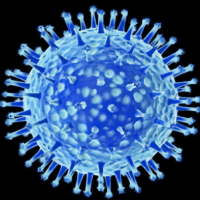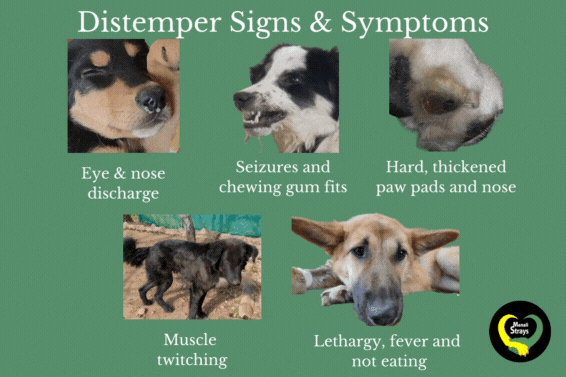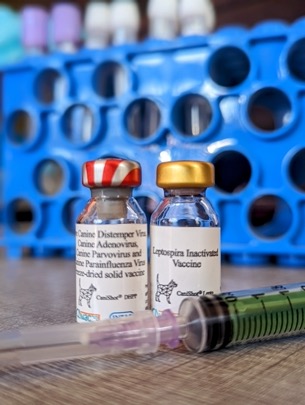In part 1 of this series we discussed parvo infection in puppies. This week, get to know more about distemper infection, another deadly disease that affects young dogs. What is it? how do dogs become infected? what are the symptoms and treatment? and how do we prevent dogs from becoming infected in the first place?
What is canine distemper?
Canine distemper is another infectious disease (like parvo) that is caused by a virus, the canine distemper virus (CDV). This particular virus is from the same family that causes measles in humans and can infect a wide variety of different animals, such as dogs, wolves, foxes, racoons, skunks, mink, ferrets, bears, Asian elephants, and large cats.

How do animals become infected with distemper?
CDV is transmitted via aerosol droplets (like the cold & flu in humans); bodily secretions, such as eye and nose discharge; and infected bodily fluids, such as urine and faeces. Dogs become infectious any time from 6 to 22 days after being exposed to the virus. However, symptoms do not begin until 14 to 18 days after being exposed. This means there is a window of about one week where a dog can be contagious, but not show any symptoms of having the disease.
CDV affects multiple systems of the body causing systemic infection. Once the virus has entered the body it replicates and quickly infects the cells lining the respiratory and gastrointestinal systems. In addition, the nerves of the central nervous system and eyes are targeted.
What are the main symptoms?
The first symptoms that are usually noticed are discharge from the nose and eyes that is quite thick and green/yellow in colour. This is usually accompanied by not eating, lethargy, diarrhea, and breathing issues. Following this acute phase, a dog may go on to develop thickened and hard paw pads and nose (this has earned the disease the alternate name of “hard-pad disease”). In addition, many dogs go on to develop long-term neurological signs, such as involuntary muscle twitching, jaw clamping, hind leg weakness or even paralysis (these symptoms can lead to people thinking an affected dog has rabies).

How is distemper treated?
As with many of these canine viruses, there is no specific treatment, only supportive care. The mainstay of treatment involves fluids to prevent dehydration and electrolyte imbalances, antibiotics to combat any secondary bacterial infections, along with drugs to control fever, pain, and seizures.
Although some dogs can survive distemper, sadly many are not so fortunate, and those that do are usually afflicted with permanent or long-term neurological signs.
How is the infection prevented?
Vaccinate! Vaccinate! Vaccinate! The vaccine for CDV can be given along with the vaccine for parvo (see part 1 of this blog), so the schedule is the same; a first vaccine at six weeks of age and then monthly boosters until three, or ideally four, months of age. Although dogs of any age are susceptible to distemper, puppies aged three to six months are in the highest risk age group.
Luckily the canine distemper virus is quite unstable in the environment (unlike the parvo virus), and is destroyed with most disinfectants, which is lucky because many survivours of distemper continue to shed the virus for several months after recovery.

Join us next time when we will discuss the details of that one disease that strikes fear in people worldwide, more than any other… rabies.
